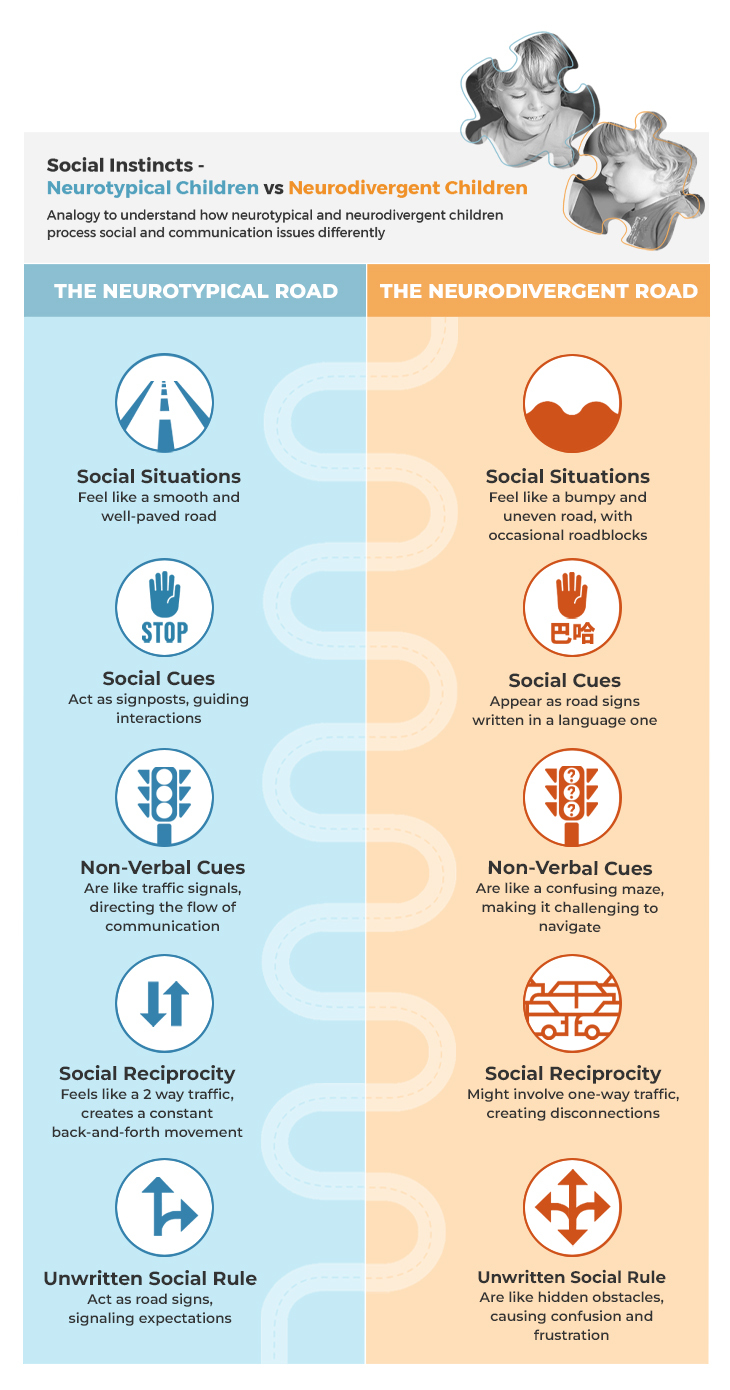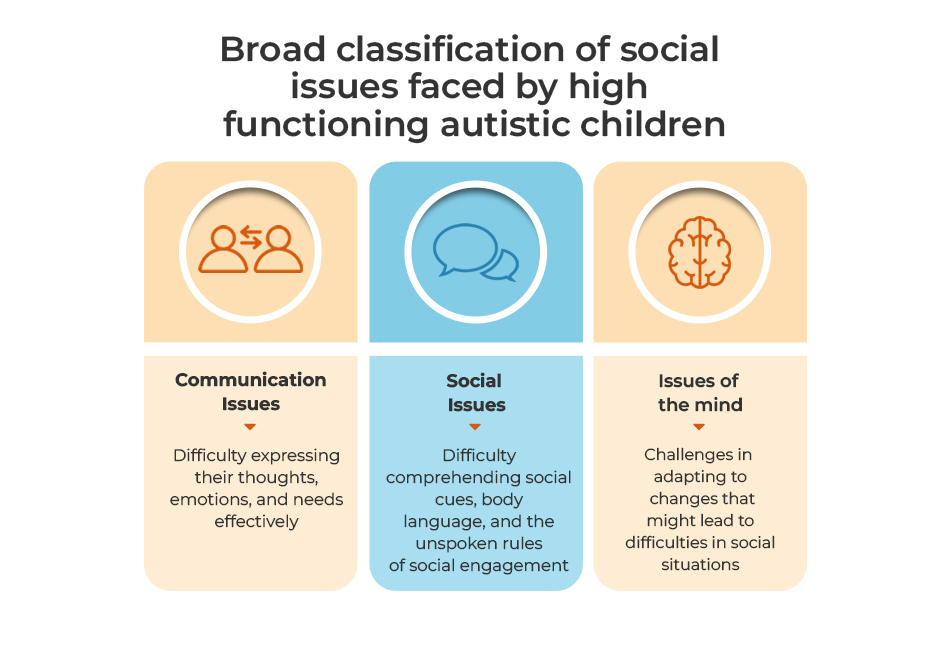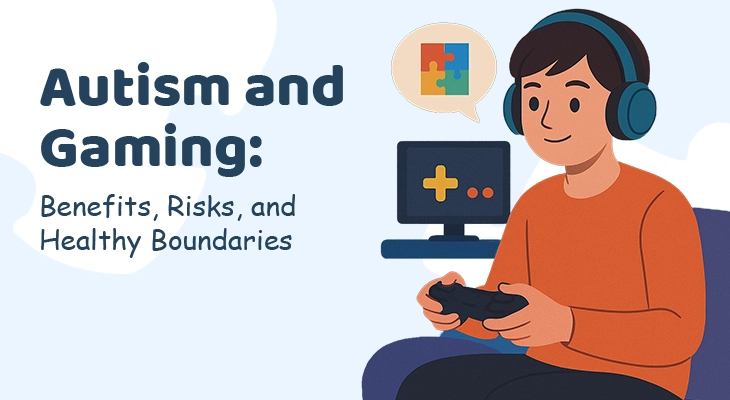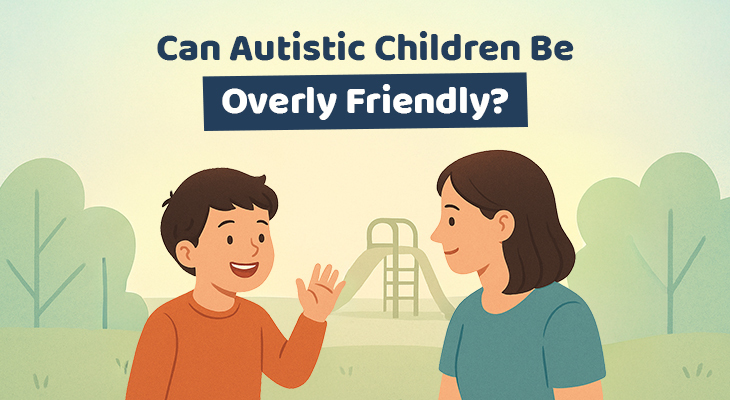Table of Content
- Introduction
- Are the social issues the same for all autistic children?
- Understanding Social Challenges in Autism
- Types of social issues faced by high-functioning autistic children
- Communication Issues faced by High Functioning Autistic Children
- Impact of social issues on the autistic child and family
- Addressing social challenges – practical strategies
- Where can you find help in navigating these social issues?
- Conclusion
- Did You Know About Folate Receptor Autoantibodies (FRAAs) and Brain Development?
- References
Introduction
Let us step into the shoes of Ethan, a devoted parent who has just received news of his child’s autism diagnosis. As he sits in the doctor’s office, a tidal wave of emotions crashes over him. Love for his child floods Ethan’s heart; but it’s accompanied by concern and a sense of uncertainty about what lies ahead.
As the doctor explains the diagnosis, Ethan finds himself grappling with a whirlwind of thoughts. He can’t help but wonder what this means for his child’s future and how he can provide the best care and support. A mix of denial and confusion clouds his mind initially, hoping that maybe there’s been some misunderstanding. But deep down, he knows that he needs to come to terms with the reality of the situation.
As Ethan navigates this new terrain, he becomes increasingly aware of the social issues surrounding autism, which further fuels his determination to learn about and understand the challenges his high-functioning young autistic child may face.
In this blog, we will explore some common social challenges faced by high functioning young autistic children and provide practical strategies for parents and caregivers to support their child’s social development.
Who are high functioning autistic individuals?
- High-functioning autistic children are those who typically demonstrate relatively strong cognitive abilities, language skills, and academic performance compared to others with autism.
- They may have average or above-average intelligence and may be able to communicate verbally, although they might struggle with social interactions and understanding social cues.
- Some high-functioning children may excel in specific areas of interest or show extraordinary memory and attention to detail.
Who are low functioning autistic individuals?
- Low-functioning autistic children, on the other hand, are generally characterized by significant challenges in communication, social interaction, and self-care skills.
- They may have limited or no speech and rely on alternative communication methods such as gestures, pictures, or assistive technology.
- Low-functioning children often require substantial support in their daily routines, and their cognitive and intellectual abilities may vary widely, ranging from severe intellectual disabilities to average or above-average intelligence.
This blog is essentially focused on the types of social issues faced by high-functioning children in the age group of 4 to 12 as well as strategies that caregivers can adopt to support and empower such children.

Download Download & share this infograph in your network [Free Download]
Communication issues
High-functioning autistic children struggle with various aspects of communication, both verbal and nonverbal. They may have difficulty expressing their thoughts, emotions, and needs effectively, and may also find it challenging to understand and interpret the communication of others. This can lead to misunderstandings and difficulties in social interactions.
Interaction issues
Interacting with others and navigating social situations can be particularly challenging for high-functioning autistic children. They may find it hard to comprehend social cues, body language, and the unspoken rules of social engagement. Forming and maintaining relationships with peers can be difficult, and they may experience difficulties with empathy, reciprocity, and perspective-taking.
Behavioral Issues
High-functioning autistic children may experience sensory sensitivities, which can make certain environments overwhelming or distressing for them. They might also display repetitive behaviors or adhere rigidly to routines as a way to cope with the unpredictability of the world around them. These patterns of behavior can impact their ability to adapt to changes and might lead to difficulties in social situations.

Download Download & share this infograph in your network [Free Download]
Communication Issues faced by High Functioning Autistic Children
Communication issues in high-functioning autistic children encompass challenges with social reciprocity, nonverbal cues, and understanding unwritten social rules. Explore the common communication issues encountered by high-functioning autistic children in the following table.
| Communication Difficulties | |
| Typical behavior patterns | Impact |
|
|
|
|
|
|
| Literal Understanding of Language | |
| Typical behavior patterns | Impact |
|
|
|
|
| Difficulty in Initiating Communication | |
| Typical behavior patterns | Impact |
|
|
|
|
|
|
Interaction issues faced by high functioning autistic children
Social issues faced by autistic children include difficulties with social interactions, understanding cues, and navigating unwritten rules. Discover common of challenges in social settings encountered by high-functioning autistic children in the following table.
| Social Interaction Challenges | |
| Typical behavior patterns | Impact |
|
|
|
|
| Sensory Sensitivities | |
| Typical behavior patterns | Impact |
|
|
|
|
| Difficulty with Social Reciprocity | |
| Typical behavior patterns | Impact |
|
|
|
|
| Difficulty Adapting to Social Norms | |
| Typical behavior patterns | Impact |
|
|
|
|
Behavioral Issues faced by high functioning autistic children
Behavioral Issues faced by autistic children include challenges in processing emotions and sensory information. In the following table, explore some of the common challenges related to the mind encountered by high-functioning autistic children.
| Difficulty in Empathy and Perspective-Taking | |
| Typical behavior patterns | Impact |
|
|
|
|
| Clear Preference for Unchanging Schedules | |
| Typical behavior patterns | Impact |
|
|
|
|
Addressing these specific challenges can help support the social development of autistic children and improve their overall social interactions and relationships.
Social Isolation
Difficulties in forming connections and maintaining friendships can lead to social isolation and feelings of loneliness, impacting the child’s emotional well-being. This isolation can also affect the family, as they may struggle to find suitable support networks and inclusive activities for their child.
Anxiety and Stress
Struggles in social situations can lead to anxiety and stress for the autistic child, potentially resulting in meltdowns or withdrawal. The family, too, may experience increased stress as they navigate how to support their child during challenging social interactions.
Academic Challenges
Social issues can interfere with academic performance, as social skills are essential for successful interactions within the school environment.
Low Self-Esteem
Negative social experiences and difficulties in relating to others can contribute to low self-esteem and self-worth for the autistic child.
The impact of social issues faced by an autistic child can have profound effects on their family. Here are a few key points on how these social issues can affect the family:
Emotional Strain
Witnessing their child struggle with forming connections, maintaining friendships, and experiencing social isolation can be deeply distressing for parents and caregivers. They may feel a sense of helplessness and worry about their child’s ability to navigate the social world and build meaningful relationships. Additionally, parents might grapple with feelings of guilt or sadness, wondering if they could do more to support their child in overcoming these challenges.
Financial Burden
The financial burden that families of autistic children need to undergo can be substantial. Autism-related therapies, specialized education, and medical interventions can be costly. Many of these expenses may not be fully covered by insurance or public assistance programs. Families may have to allocate significant funds for ongoing therapy sessions, medication, and assistive devices. Moreover, some parents may need to reduce their work hours or leave their jobs to care for their autistic child full-time, leading to a loss of income and added financial strain.
Time Commitment
Caring for an autistic child often involves intensive caregiving, coordinating various therapies, medical appointments, and educational support. These responsibilities can consume a significant portion of the day, leaving little time for other family members, personal pursuits, or self-care. Navigating through the challenges of autism can be a full-time commitment, impacting the family’s daily routines and limiting their flexibility in managing other aspects of their lives.
Sibling Dynamics
Having an autistic sibling can negatively impact the non-autistic child in various ways. They may feel neglected due to the attention the autistic sibling requires, leading to frustration and resentment. The added responsibility of supporting their sibling can cause stress and pressure, affecting their emotional well-being. Social isolation might arise as they struggle to form friendships or fear judgment due to their sibling’s differences. Witnessing their sibling’s challenges can also be emotionally burdensome for the non-autistic child.
Advocacy and Navigation
Navigating the complex educational and healthcare systems to access appropriate services can be overwhelming. Families often face limited availability of specialized resources and may have to advocate persistently to secure the necessary support for their child.
Stigma and Misunderstanding
Stigma can lead to judgment and misconceptions about autism, causing the family to encounter discrimination and isolation from their community. Social misunderstandings may result in people being insensitive or dismissive of the child’s needs, making it difficult for the family to access support or understanding.
School
- Work with the school to implement social skills training, utilize visual aids, and develop individualized education plans (IEPs) that address the child’s social challenges and cater to their specific learning needs.
- Establish a regular and open line of communication with the child’s teachers and school staff to stay informed about their progress, challenges, and any changes in their social interactions.
- Collaborate with the school to establish a buddy system, where the child is paired with a designated peer who can provide support and assistance during social interactions and activities.
- Advocate for disability awareness programs within the school to promote understanding and empathy among peers, enhancing social acceptance and interactions for the autistic child.
Playgroup
- Prepare the child for playgroup activities in advance by using social stories and role-playing to demonstrate appropriate social behaviors and responses.
- Introduce the concept of sharing and taking turns.
- Work with playgroup organizers to ensure that the overall playgroup environment is designed to minimize sensory overload, with consideration for lighting, noise levels, and the availability of quiet spots throughout the space.
- Provide positive reinforcement and praise when the child demonstrates social skills effectively. Specific and immediate praise, such as saying “Great job sharing your toys with your friend!” or “I noticed how you took turns during the game; that was fantastic!” or visual cues, such as thumbs up or smiley faces.
- Arrange playdates with a small group of familiar peers outside of the playgroup to facilitate deeper connections and friendships.
Other Social Settings (e.g., Community Events, Gatherings)
- Role-play various social scenarios to practice appropriate responses and behaviors.
- Prepare the child for social events by discussing what to expect, who will be present, and what activities will take place. This can help reduce anxiety and uncertainty.
- Use visual schedules or social stories to help the child understand the sequence of events and appropriate behaviors during the gathering.
- Establish a communication system, such as using hand signals or special phrases, to discreetly communicate with the child during the event.
- Facilitate social interactions with peers by initiating introductions and finding common interests to help the child connect with others.
- Praise and reinforce positive social behaviors during and after the event, acknowledging the child’s efforts and successes in navigating social situations.
Public Transportation and Travel
- Plan Ahead: Provide the child with visual schedules or social stories about the upcoming travel or transportation experience, including details about the mode of transportation, the duration of the journey, and any potential changes in routines.
- Create a Calming Travel Kit: Prepare a travel kit with the child’s favorite comfort items, such as toys, books, or sensory tools, to help them stay calm and engaged during the journey.
- Practice Travel Routines: Role-play travel scenarios at home to familiarize the child with expected behaviors during transportation, such as waiting in line, following safety instructions, and using public restrooms.
- Offer Visual Supports: Use visual supports, such as picture schedules or destination cards, to help the child understand the travel itinerary and anticipate each stage of the journey.
- Seek Pre-Boarding or Early Entry: If possible, request pre-boarding or early entry on public transportation or flights to avoid crowded situations and ease the child’s transition onto the vehicle.
- Allocate Breaks: Plan for regular breaks during long trips to allow the child time to decompress and recharge in a quiet and comfortable space.
- Provide Reassurance: Offer reassurance and positive reinforcement during travel, acknowledging the child’s efforts to cope with the challenges of the journey.
- Inform Travel Staff: Communicate with travel staff, such as flight attendants or bus drivers, about the child’s specific needs and potential challenges, so they can offer appropriate support and understanding.

School, Playgroup, or Gatherings? Discover actionable strategies to help your child thrive in various social settings. From buddy systems to sensory-friendly approaches, let’s create a nurturing environment for their social growth!
Applied Behavior Analysis (ABA) Therapy
ABA therapy is widely used to address social and behavioral difficulties in autism. Parents can work with Board Certified Behavior Analysts (BCBAs) who design individualized ABA programs to target specific social goals and improve behavior and communication skills.
Social Skills Training Programs
These are offered by various organizations and clinics focusing on teaching specific social skills, such as making eye contact, initiating conversations, taking turns, and understanding emotions. The programs often use structured group sessions with trained therapists to practice and reinforce these skills.
Speech and Language Therapy
This is widely available in schools, private practices, and clinics and also at home. Licensed speech-language pathologists work with autistic children to improve communication skills, including speech production, language comprehension, and social communication.
Occupational Therapy
This is commonly provided in schools, clinics, and private practices. Occupational therapists work with autistic children to develop strategies to cope with social challenges and to improve fine motor skills and adaptive behaviors.
Individualized Education Plans (IEPs)
IEPs are developed by schools for eligible students with disabilities, including autism. The IEP outlines the child’s specific educational goals, accommodations, and support services required to address their social challenges effectively. IEP teams typically include teachers, therapists, school administrators, and parents or caregivers.
Peer-Mediated Interventions
Some schools and therapy centers offer peer-mediated interventions, where typically developing peers are trained to engage and interact with autistic children. These interventions aim to foster positive social experiences and encourage inclusive social interactions.
Parent Support Groups and Workshops
Parent support groups, facilitated by autism organizations or local community centers, provide a space for parents and caregivers to connect, share experiences, and learn from one another. Additionally, workshops and training sessions are available to educate parents about effective strategies and resources to support their child’s social development.
Social Clubs and Extracurricular Activities
Many communities offer social clubs and extracurricular activities specifically designed for autistic children, providing opportunities for social practice and building friendships. Additionally, inclusive extracurricular activities, such as sports, arts programs, and scouts, are available to help autistic children engage in social interactions with their peers.
Families can work with their child’s school, healthcare providers, and local autism organizations to access these resources and tailor interventions to meet their child’s unique needs.

Social challenges can be tough for autistic children, affecting their emotional well-being and sense of belonging. Let’s offer understanding and support to help them navigate the social world with confidence and joy.
Conclusion
As parents of a high-functioning autistic child, navigating the social challenges faced by your child can feel overwhelming at times. Having read this guide, you now know that there is a wealth of support and resources available to help your child thrive in social settings.
Remember that each step forward, no matter how small, is progress. Your dedication, love, and advocacy for your child’s well-being will make a significant impact on their journey. The journey might have its ups and downs, but with the collective efforts of parents, caregivers, teachers, therapists, and support networks, there is immense hope for a bright future for your child.
For information on autism monitoring, screening and testing please read our blog.
References
- American Psychiatric Association. (2013). Diagnostic and Statistical Manual of Mental Disorders (5th ed.). American Psychiatric Publishing.
- Autism Speaks. (n.d.). Family Services: Caring and Coping. Retrieved from
https://www.autismspeaks.org/family-services/caring-and-coping
https://www.autismspeaks.org/social-skills-and-autism - National Autistic Society. (2021). Autism and Social Communication. Retrieved from
https://www.autism.org.uk/about/communication/social-communication.aspx - Patten E, et al. (2020). Autism Spectrum Disorder: Screening and Diagnosis. American Family Physician, 101(7), 417-423.
- American Speech-Language-Hearing Association. (n.d.). Autism Spectrum Disorder (ASD). Retrieved from
https://www.asha.org/public/speech/disorders/autism/ - National Autistic Society. (2021). Supporting Your Child’s Social Life. Retrieved from
https://www.autism.org.uk/about/strategies/social-life.aspx - National Autism Center. (2015). Findings and Conclusions: National Standards Project, Phase 2. Randolph, MA: National Autism Center.
- Owens, G., Granader, Y., Humphrey, A., & Baron-Cohen, S. (2008). LEGO® Therapy and the Social Use of Language Programme: An Evaluation of Two Social Skills Interventions for Children with High Functioning Autism and Asperger Syndrome. Journal of Autism and Developmental Disorders, 38(10), 1944-1957.
- Raising Children Network. (2021). Autism Spectrum Disorder: Supporting Your Child’s Social Skills. Retrieved from
https://raisingchildren.net.au/autism/communicating-relationships/social-skills-support/autism-spectrum-disorder - Smith, L. E., Maenner, M. J., & Seltzer, M. M. (2012). Developmental Trajectories in Adolescents and Adults with Autism: The Case of Daily Living Skills. Journal of the American Academy of Child & Adolescent Psychiatry, 51(6), 622-631.
https://www.socialthinking.com/





Are the social issues the same for all autistic children?
Before we delve into the common social challenges experienced by autistic children, we need to understand that social issues do not manifest in the same way in every autistic child. While some are able to learn coping strategies, others are not. The terms “high-functioning” and “low-functioning” are often used to describe the level of support a child may need in daily living, including social interactions. It is essential to approach these terms with sensitivity, as they can oversimplify the complexity of autism.